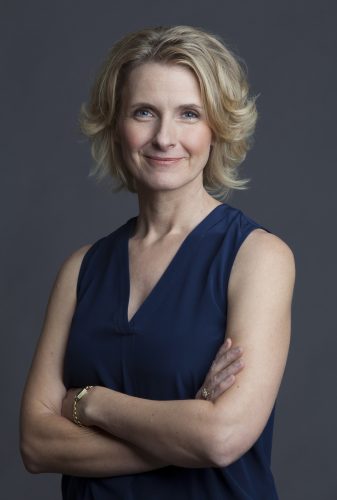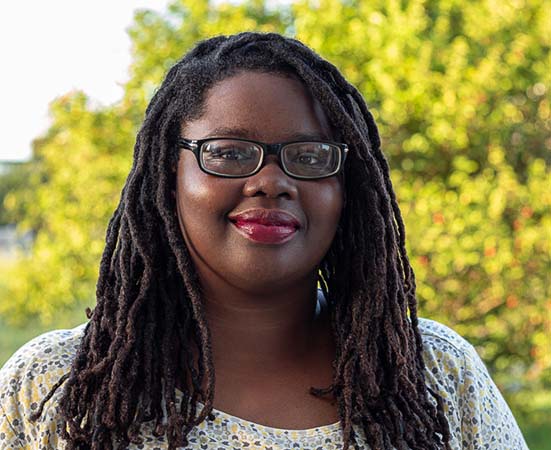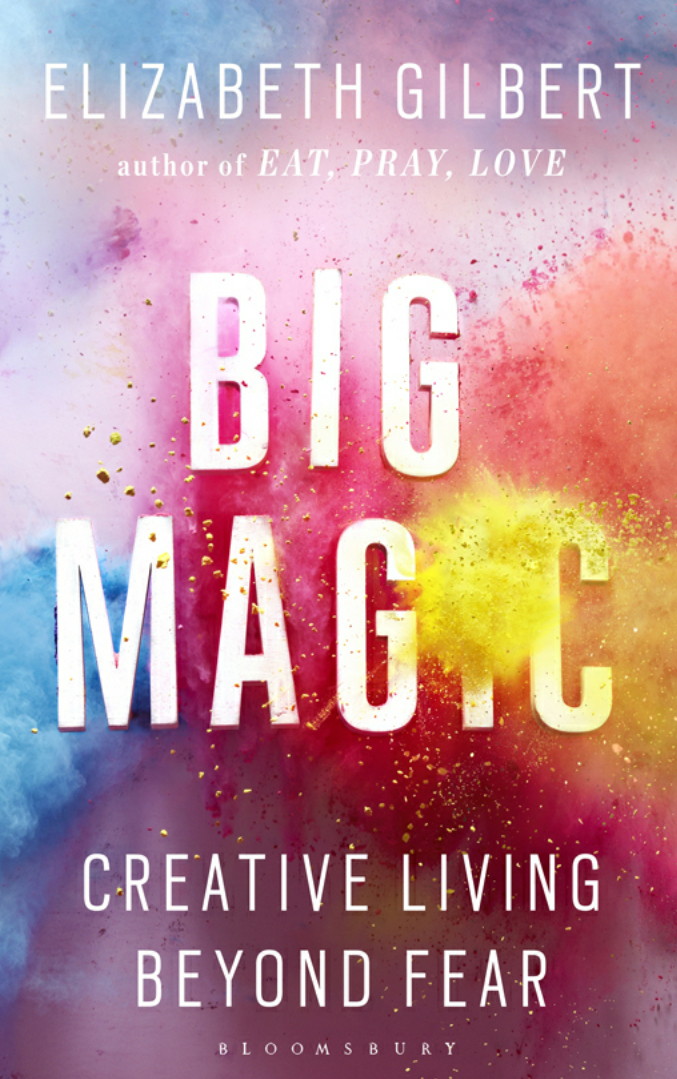I don’t read self-help books very often, but last October, my good friend, the artist Maharanie Jhillu of artful.592, introduced me to Elizabeth Gilbert’s Big Magic: Creative Living Beyond Fear. At the time, I was stressed about a writing project that was not going well. While I was grumbling to her, she recommended Big Magic. She told me it had helped her work out some of the kinks of her artistic process and, since Elizabeth Gilbert is a writer, she thought that the book might help me solve my writing problems.

She was right. It did help me.
Mind you, Big Magic is no step-by-step guide promising to change your life in just five steps and guaranteeing that you’ll make it big as a creative in a week or two. No. Gilbert’s book is a five-part examination and critique of the common assumptions about the creative life and language, and a book of suggestions on how a person can defy these assumptions to live a playful, healing and less anxious creative existence.
While I don’t agree with all of Gilbert’s advice and theories, I enjoyed the book and have begun to reshape the way I think about my own creativity. If you are a creative – no matter what type – I think this book might be able to help you too.
Five Steps to Divinity
Big Magic is divided into six lessons: Courage, Enchantment, Permission, Persistence, Trust, and Divinity. In each section, Gilbert uses autobiographical references and anecdotes to explain how the first five lessons can help creatives live a more fulfilling and less anxious creative life, and how such living can push them toward finding what divinity means for them.
Courage
The first step Gilbert proposes is to have courage. Gilbert doesn’t propose that creatives should be fearless. After all, our fear is a necessary part of or psyche to help us avoid trouble. Fearlessness can make people take wild, nonsensical risks that can only hurt them in the end.
Instead, Gilbert suggests that we acknowledge a vital truth: fear and creativity are like conjoined twins, but while fear is a base instinct that just yells at us to “stop” when we are faced with the unknown or new situations, our creativity is more inquisitive.
Therefore, to lead a creative life without fear, Gilbert suggests bringing your fear with you, but never letting it control your creative endeavours. Instead, let your curiosity and intrinsic desire to make things lead the way.
Enchantment
Once creativity and curiosity are in control, and fear is sufficiently contained, Gilbert suggests opening oneself to creative enchantment. This is the exciting part, where ideas begin to choose you, sending chills up your spine or keeping you up at night fixating on the weird and wonderful of the world.
What I found interesting about this part of the book was this suggestion that ideas do not come from within us but are sentient entities of their own.
“I believe that our planet is inhabited not only by animals and plants and bacteria and viruses, but also by ideas. Ideas are a disembodied energetic life-form. They are completely separate from us, but capable of interacting with us – albeit strangely. Ideas have no material body, but they do have consciousness, and they most certainly have will. Ideas are driven by a single impulse: to be made manifest.” (pp. 34-35)
Gilbert went on to explain that for thousands of years, people believed that inspiration was outside of us. In fact, both the Greeks and Romans believed that creative people had an external spirit of creativity that lived within the walls of their creative spaces who would occasionally aid them in their creative endeavours. The Romans called these spirits geniuses.
During the Renaissance, as a more human-centred view of life arose and gods and superstitions fell out of fashion, the label of “genius” fell upon creatives themselves. Gilbert says she finds it lamentable that we now put the full weight of creative success or failure on the shoulders of our creatives. Consequently, the language of creativity has become riddled with toxic individualism. Creatives either view themselves as masters of their creativity, or slaves to it.
Gilbert suggests going back to basics by thinking of yourself as a collaborator with another sentient, witty force that is outside of yourself. The thinking, she notes, saves the ego, but also protects the artist from the corrupting influence of praise and the corrosive effects of shame. In so doing, creative people can find enchantment and joy in the process rather than anxiety.
This is where the Big Magic begins.
Permission
So many creatives believe that they need to be granted permission to create through acquiring official credentials through expensive university programmes or by attending prestigious workshops. In doing so, many creative people plunge themselves into debt which, as Gilbert notes, ends up stifling their creative processes altogether because they often ask their creativity to pull them out of that debt.
She therefore suggests that no one should put so much pressure on their creativity to serve them monetarily. After all, creative success is a part of a huge gamble, and the industry is deeply subjective. Instead, she encourages creative people to develop a personal sense of creative entitlement, a belief that one is entitled to exist within one’s chosen creative label (writer, painter, photographer, etc.). If one proclaims this title to themselves daily, forever, and work diligently toward that title, then it is all the permission they need.
Persistence
But courage, inspiration, and self-given permission are not enough for a creative life. One must be persistent and dedicated to the craft. Once an idea chooses to manifest itself through you, you need to show it that you are wholly dedicated to bringing it into the world. Every beginning is hard, especially when one is just starting on one’s creative journey and the images in your head don’t quite match you render on the page or canvas. That’s okay though. Frustration is a part of the process.
Gilbert also notes that persistence will help you to understand the psychological patterns of your creativity. In her case, she has learned how to identify, endure, and safely navigate through the inevitable cycles of anxiety she goes through whenever she works on a project.
As a result, she is also able to let go of her perfectionism to finish what she starts. Perfectionism, after all, is a form of procrastination. She therefore suggests that the best way to combat the perfectionist impulse is to “learn how to become a deeply disciplined half-ass”. Push through those bad beginnings, knowing that your creations will never be perfect, no matter how long you have been in the business. Done is better than good in some cases, as you will go through all the stages you need to learn how to complete a creative project.
As you continue to complete projects, you will improve.
Trust
“Far too many creative people have been taught to distrust pleasure and to put their faith in struggle alone. Too many artists still believe that anguish is the only truly authentic emotional experience.” (p. 209)
Lastly, Gilbert says that we need to trust our creative process. Many people love being creative, but few believe that creativity loves them back. In fact, the language around creativity is twisted and violent, suggesting that to create something worthwhile, one needs to suffer in some way. Otherwise, one’s craft is not authentic.
Gilbert is one of the many contemporary creatives who openly critique this position. As mentioned in the “Enchant-ment” section, Gilbert suggests viewing oneself as a collaborator with creativity. She also suggests learning to become a trickster with your creativity, and finding ways to be playful with your creative processes so that you can enjoy yourself and make it less like “work”, even if the work centres on heavy topics.
In doing so, one counteracts the narrative of the Tormented Artist, which not only saves ones’ sanity but also further reduces the anxiety associated with creativity and the creative process. This doesn’t mean that the anxiety and frustration will go away completely, but it means that one will no longer suffer to create. After all, the idea chose you to help it manifest into the world. Why would it want to destroy you?
So, trust your process and have fun with it, and then leave the rest to fate.
Three Criticisms
I loved Big Magic. I loved Gilbert’s advice on how to reduce a lot of the anxiety that constantly creeps into creative life. Nevertheless, I have three criticisms of her ideas in the “Permission” section.
Firstly, Gilbert noted that one of the things that calms her the most is that she believes that human artistic expression is nonessential to life and living, and it stands as proof that she doesn’t live in a post-apocalyptic dystopia. Firstly, if the pandemic has taught me anything, art can be lifesaving. During the worst of the pandemic, people streamed more movies and series, read more books, and listened to more music just to cope. We would have had none of these things if not for human creativity. Secondly, apocalypses and dystopias are relatives. Native Americans and African Americans have gone through multiple genocides due to the horrors of colonialism, and yet they have produced some of the most riveting, thought provoking art I have ever consumed. And that’s just a perspective from her continent. While I understand her sentiments, I think that this perspective is woefully limited.
Secondly, Gilbert encourages creators to explore any idea that comes to them. While this is an admirable statement, I do believe that there are many bad ideas out there, or good ideas that can be executed by the wrong people. In either case, the idea may be fantastic, but it can genuinely hurt people. I think, therefore, that Gilbert should have advocated a bit more for artists to be responsible with their creations and to think about the repercussions of their art, especially if that art centres on vulnerable peoples or groups.
Lastly, I take personal issue with Gilbert’s proposition that formal writing education or workshops are unnecessary. While I agree that it is not a good idea to go through expensive programmes just to prove to yourself that you ARE an artist, I believe that such programmes can help people to become creative educators. I also believe that going to workshops or short classes can help expand your creative perspective. Workshops can help you develop the language for the type of creativity you want to immerse yourself in, thus giving you words for what you want to do and pointing you toward resources that can help you improve. Lastly, both formal programmes and workshops can help you enter a community of creatives that can help you as you continue your creative journey. While it is possible to do all of this on your own, sometimes that jump start is critical for your growth.
Conclusion
There are so many more insights that Gilbert proposes within Big Magic that are not covered in this review. Nevertheless, this book is a good resource for creative people seeking to overcome the many fears and anxieties connected to creative living. It not only proposes some radical notions on how to re-examine one’s approach to creative life, but it also gives suggestions on how to make the creative process more fun and personally rewarding. While there are some parts that I personally disagree with, I still think that the lessons contained within this book can benefit any creative person who explores this book.
Want to learn more about creative genius? Watch Elizabeth Gilbert’s TED Talk here.
 Nikita Blair is a speculative fiction and creative non-fiction writer. Her work has been featured in Moray House’s Ku’wai magazine, The Guy-ana Annual, and the Commonwealth Writer’s blog. A collection of her work is featured on her blog, blairviews, where she writes book reviews, essays, and articles on topics of interest.
Nikita Blair is a speculative fiction and creative non-fiction writer. Her work has been featured in Moray House’s Ku’wai magazine, The Guy-ana Annual, and the Commonwealth Writer’s blog. A collection of her work is featured on her blog, blairviews, where she writes book reviews, essays, and articles on topics of interest.









